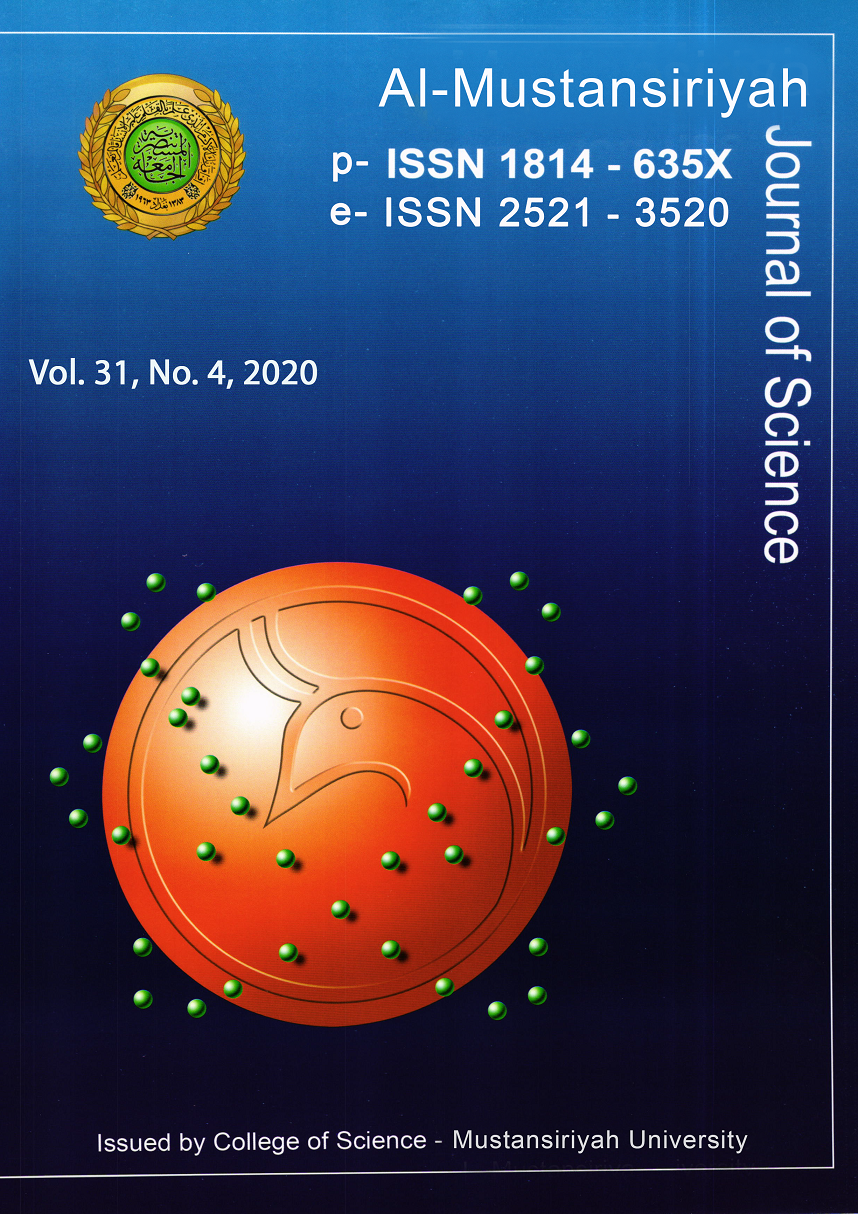Evaluation of Atmospheric Blocking Effects on Weather Events in Iraq
DOI:
https://doi.org/10.23851/mjs.v31i4.705Keywords:
Atmospheric blocking, Omega block, Heavy precipitation, IraqAbstract
Atmospheric blocking has received a lot of attention in recent years due to its impacts on mid-latitude circulation and then on weather extremes such as cold spells, heat waves, drought, and heavy rain. In this paper, the effects of atmospheric blocking on weather events ''rainfall in particular'' over Iraq are evaluated. Daily meteorological data from the National Centers for Environmental Prediction (NCEP) for the period 2002-2018 were analyzed to identify different atmospheric blocking systems over Iraq and surrounded regions. In order to locate the blocks on maps, the study domain is extended from 10-70o N and 10-70o E for mean sea level pressure. This study state two cases of Omega blocking system occurred on 25 Jan 2006 and 01-03 Feb 2006. Rainfall observed by the Tropical Rainfall Measurements Mission (TRMM) along with true color cloud images detected by the Moderate Resolution Imaging Spectrora-diometer (MODIS) were employed for determining the severity and trajectory of rainstorms associated with atmospheric blocking systems. NCEP provides data with a spatial resolution of 2.5o × 2.5o while TRMM is 0.25o × 0.25o. Analysis of one typical year (2016) showed that among 24 blocking systems detected during the period of this work, 37.5% were Omega blocks, 20.8% were Cut-off low blocks, 16.7% were Rex blocks, and the percentage of the Cut-off high and Split flow blocks were 12.5% each. The results also indicated that the strongest blocking was the Omega blocking that occurred on 01-03 Feb 2006 and resulted in 120 mm rainfall.Downloads
References
J. R. Holton, and G. J. Hakim, An Introduction to Dynamic Meteorology, 5 th Edition. 2012: Cambridge university press. 552 pp.
M. Mak, Atmospheric dynamics, 2011: Cambridge University Press. 500 pp.
J. Masoompour Samakosh, M. Soltani, A. Hanafi, G. Azizi, E. Mirzaei, and A. Ranjbar Saadat Abadi, "The omega blocking condition and extreme rainfall in Northwestern Iran during 25-28 October 2008," 2014, Journal of the Earth and Space Physics. 40(3): p. 55-74.
G. Azizi and M. Khalili, "Roles of Blocking in Extreme Cold Events over Iran," 2011.
G. Azizi and M. Khalili, "An Investigation of Iran's Precipitation Anomalies in Relation with Atmospheric Blocking," in Advances in Meteorology, Climatology and Atmospheric Physics, ed: Springer, 2013, pp. 521-526.
I. Rousta, F. K. Akhlagh, M. Soltani, and S. Taheri, "Assessment of blocking effects on rainfall in northwestern Iran," Proceedings of COMECAP 2014, p. 291, 2014.
L. Dong, C. Mitra, S. Greer, and E. Burt, "The Dynamical Linkage of Atmospheric Blocking to Drought, Heatwave and Urban Heat Island in Southeastern US: A Multi-Scale Case Study," Atmosphere, vol. 9, p. 33, 2018.
S. Mohr, J. Wandel, M. Kunz, S. Lenggenhager, and O. Martius, ''Relationship between atmospheric blocking and thunderstorm activity over western and central Europe,'' 2019.
Downloads
Key Dates
Published
Issue
Section
License
(Starting May 5, 2024) Authors retain copyright and grant the journal right of first publication with the work simultaneously licensed under a Creative Commons Attribution (CC-BY) 4.0 License that allows others to share the work with an acknowledgement of the work’s authorship and initial publication in this journal.






















